Set Review ➟ 21309 NASA Apollo Saturn V
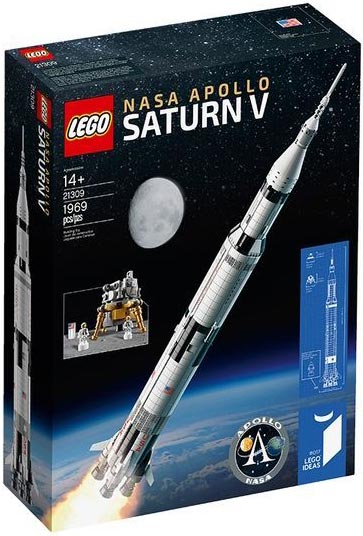
LEGO Ideas is about to launch the next set designed by AFOLs: the Saturn V rocket that took the Apollo mission to the moon. What I like about LEGO Ideas is the fact that it provides a space for sets that wouldn’t otherwise fit into any other LEGO theme.
The 21309 NASA Apollo Saturn V is the result of a collaboration between two AFOLs—Felix Stiessen (saabfan) and Valérie Roche (whatsuptoday) – why, interestingly, have never actually met in person. They highlight the fact that working together meant that at least one of them was always actively developing the idea and improving the model. The result is amazing and the necessary 10,000 supporters shows that many people feel the same.
The instruction book also provides some information about the LEGO designers who converted this detailed idea into an actual LEGO set. Michael Psiaki, Carl Thomas Merriam and Austin William Carlson were so interested in the model that they requested to work on the model. Their biggest challenge? Making sure the model is stable and can separate easily into stages.
Let’s get back to the box. In addition to a representation of the rocket on a starry background, it includes an image of the lunar lander and the astronauts and official emblem of the mission. A nice detail is the fact that the set contains exactly 1969 elements, a reference to the year of the first moon landing. It also makes this set the largest so far in the LEGO Ideas theme.
Although the size of the box (48cm x 37.5cm x 11cm), the number of elements and the indication of the size of the complete model that appear on the box should have prepared me, I still found the size of the finished model very impressive. At 1 metre tall and nearly 18cm wide at the base, this is one big rocket!. Even more so when you place the 4 astronauts next to it. As you can read in the book, the original rocket was 111 metres tall; about the size of a 36 story building!

You build the rocket in stages, starting with the first and biggest: it’s over 40cm tall. What might at first look like a repetitive build turns out to be a true lesson in SNOT (Studs Not On Top) techniques. Even though the core of the module is built from the bottom up, the outside is 8 sided and attaching the grilled section (right about the letters USA) requires a complex clip system. This idea is repeated in the second stage, but in a somewhat different way.
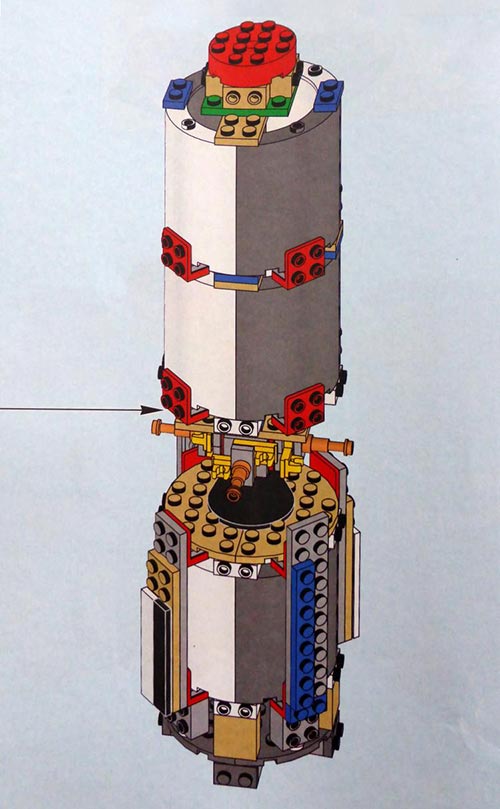
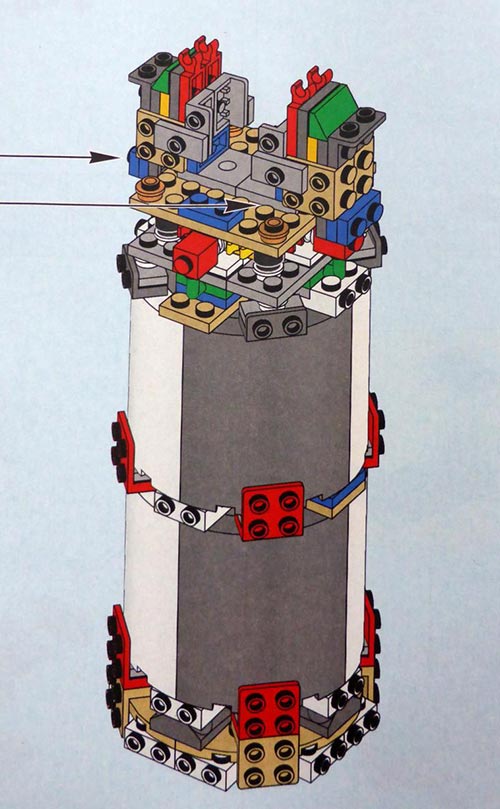
Far from making it a mere cylinder, the stage has lots of interesting shapes, including the grilles I mentioned above, round bricks simulating pipes and fins—small ones at the top and large ones at th bottom. The engines are very complete and you can feel the authenticity of the model at every stage.
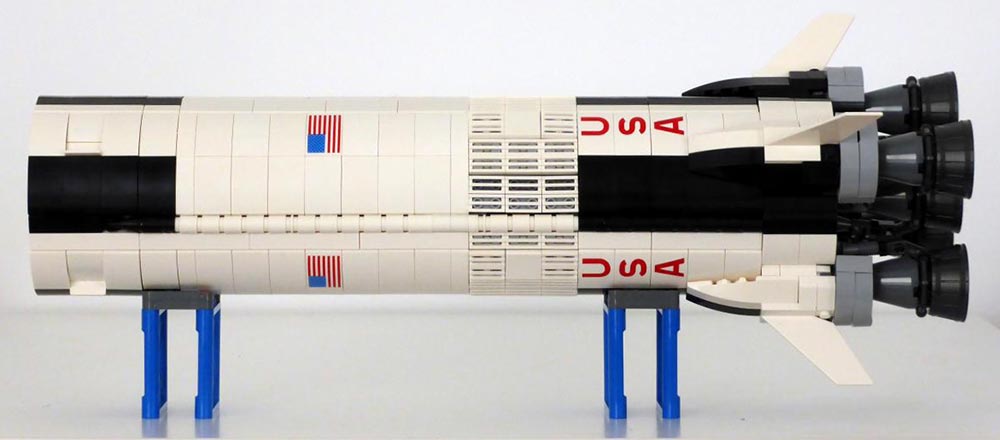
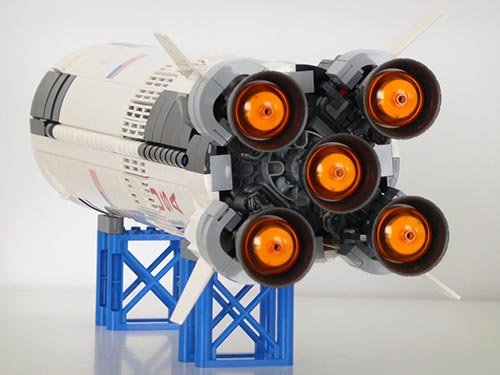

There isn’t a single sticker in the set and there is a variety of printed parts. These include the letter USA and the American flag printed on slopes. Next up there are the words "UNITED” and “STATES” on tiles for the second stage, the printing on the cone that represents the returning module and the front of the lunar module.
As usual, the contrasting colours on the inside of the model make it easy to identify them and place them correctly, while the outside of the model is predominantly white and black with some greys.
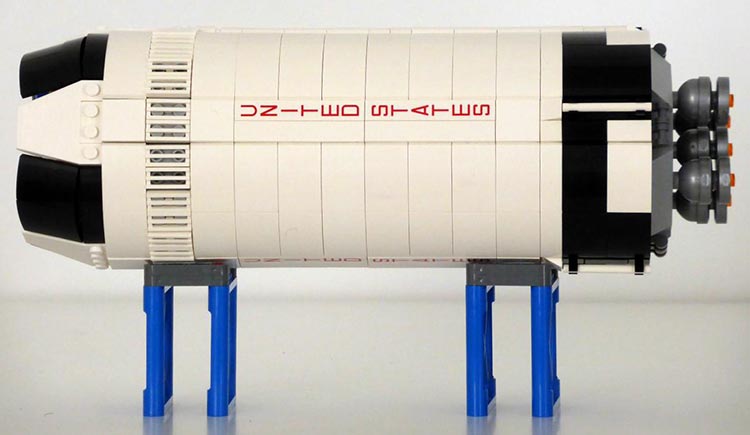
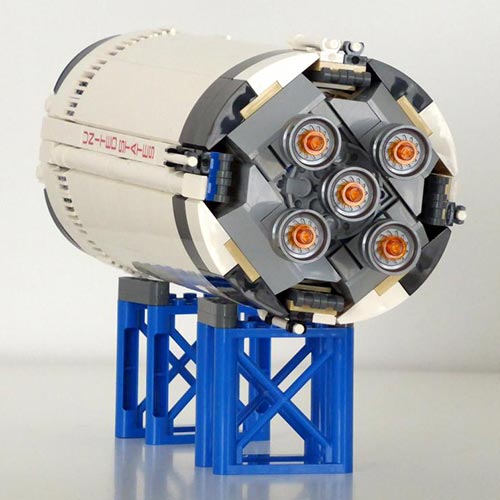

There are still some surprises for the third stage, like the use of some of the elements that provide details and the way some of the sides are attached using the ball joints that were first introduced in the Mixels sets.
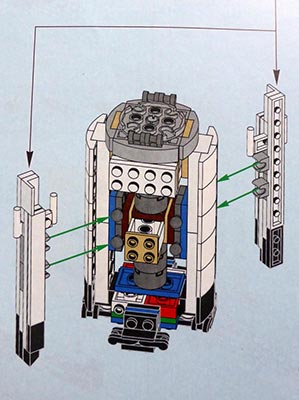

The three modules click together (and separate) easily and the resulting structure is surprisingly solid. The last stage, which houses the lunar module, is connected in the traditional way, with studs. It includes the possibility to easily separate the top come to reveal the lander and allow the command module to connect to it.
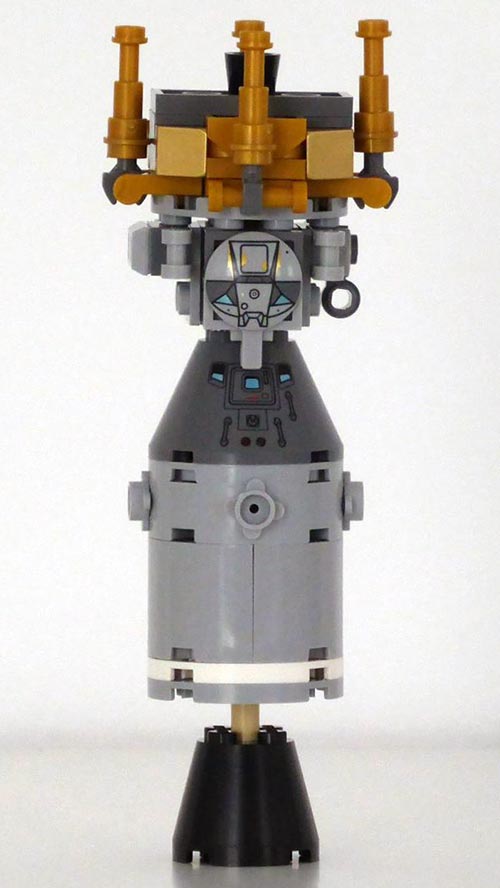
With all the elements in place you have an impressive 1 metre tall rocket that faithfully represents the original.
There are still a few more things to build. First up is the lunar module. Despite its reduced size (5.3cm tall) it has lots of details. You can even separate the landing module (the part with the legs) from the returning module that brought the astronauts back into lunar orbit. Finally there is a small model representing the splashdown which shows the command module with the floaters.
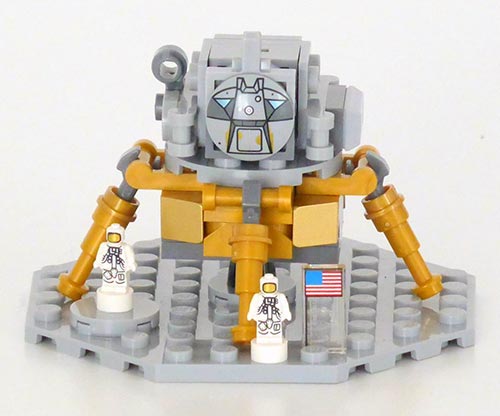

So far I have only praise for the model. Both the representation of the of the rocket itself and the small scenes make this an instructive and historical set. t really is a display model and explaining all the stages takes a bit of further reading and imagination. The last part of the rocket (the big antenna on top) is the Launch Escape System (LES) that was designed to provide an escape route in case anything failed during a number of stages. However, after some time it was detached so the command module could dock to the lunar module. In this set the way to represent that is to remove the LES together with the white command module and substitute it with the grey command modules from the splashdown. After doing this you can represent the remaining stages of the mission, including the return trip.
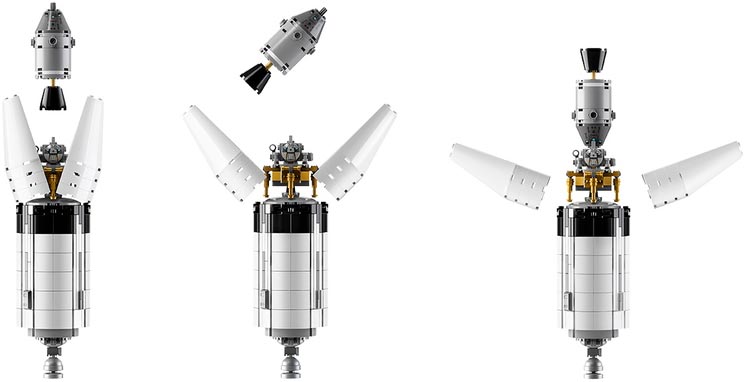
Historical, educational, a showpiece…what more reasons do you need to get this set :D

2305